Foreword
Dear Friends,
Mostra Internazionale del Cinema Libero and Cineteca di Bologna are glad to invite you to the 27th edition of Il Cinema Ritrovato festival, from Saturday June 29th through Saturday July 6th, 2013. Eight days packed with screenings, conversations, events; four screens running from morning to evening (our two Lumière Theatres, Arlecchino and Jolly Cinemas) and the evening wonder in Piazza Maggiore.
|
| ||
Recovered & Restored
At this critical and delicate time in the history of cinema, witnessing the transition from film to digital, this classic section, Recovered & Restored, examines and explores restoration and presentation in both formats. A selection of the very best restorations, realised over the past year (and in most cases in recent months) by public and private institutions, will be presented both in 35mm and digital formats during evening screenings at the Piazza Maggiore or at the Cinema Arlecchino. This section offers an extraordinary point of view on technological developments as well as a breath-taking journey through film history: thanks to these restorations we can recapture the lost meaning of these films.
In honor of Burt Lancaster’s 100th anniversary of his birth, his daughter Joanna will join us to introduce | |
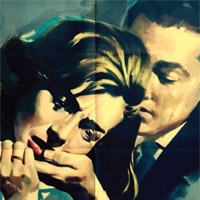
|
|
____________________________________________________________________________________
| ||
Silent HitchThe restoration of Alfred Hitchcock’s nine surviving silent films is definitely one of the most complex and important restoration project undertaken by the BFI National Archive to date. Il Cinema Ritrovato will be the first festival to screen them all, for the first time, in 35mm. The collection starts with the sensational The Pleasure Garden, a newly born film which was believed to be lost for many years, and ends with the evergreen Blackmail. Nine works which go well beyond the ‘crime scene’ to reveal Hitchcock’s remarkable inspiration and creative power which made him, while still in his 20s, the leading British director of his times. The Pleasure Garden (1926) • The Lodger (1926) • Downhill (1927) Easy Virtue (1927) • The Ring (1927) • Champagne (1928) • The Farmer’s Wife (1928) • The Manxman (1929) • Blackmail (1929) |

| |
|
____________________________________________________________________________________
| ||
Allan Dwan, The Noble Primitive
After von Sternberg, Capra, Ford, Hawks and Walsh, this year’s tribute will be dedicated to Allan Dwan. His career spans from 1911 to 1961 and produced 400 films (some claim 1400), covering every genre and technical novelty: from his early films (finally restored) to the more mature ones, a fine star vehicle for Douglas Fairbanks (The Iron Mask) and Gloria Swanson (Manhandled) alike. In the 30s and 40s Dwan is able to combine a spectacular with a more intimate cinema, to make one of the best anti-McCarthyist works ever made (Silver Lode). Finally, Most Dangerous Man Alive: an extraordinary end of career. A Modern Musketeer (1917) • He Comes Up Smiling (1918) • Getting Mary Married (1919) • Zaza (1923) • Manhandled (1924) Stage Struck (1925) • East Side, West Side (1927) • Frozen Justice (1929) • The Iron Mask (1929) • While Paris Sleeps (1932) • Fifteen Maiden Lane (1936) • Up in Mabel’s Room (1944) • Rendezvous with Annie (1946) • The Inside Story (1948) • Silver Lode (1954) • Tennessee’s Partner (1955) • Most Dangerous Man Alive (1961) |

| |
|
____________________________________________________________________________________
| ||
Tenderly Ironic: Vittorio De Sica, Actor and DirectorA Maestro, a father, a beacon of Italian cinema. Vittorio De Sica is Italian first modern superstar and a pivotal figure in our country’s collective memory. This retrospective pays homage to his pre-neorealist work, his Neapolitan spirit, his ‘visionary’ audacity of the 60s, as well as to his work as a young leading man, an irresistible comedian, an important dramatic actor, and to his lasting impression on audiences throughout the years, able to seduce, to move and always to inspire thunderous applause.Teresa Venerdì (1941) • I bambini ci guardano (Children Are Watching Us, 1944) • La porta del cielo (1945) • L’oro di Napoli (The Gold of Naples, 1954) • Il giudizio universale (The Last Judgment, 1961) • Il Signor Max (Mr. Max, 1937) by Mario Camerini • Altri tempi (1952) by Alessandro Blasetti • Peccato che sia una canaglia (Too Bad She’s Bad, 1955) by Alessandro Blasetti • Il generale Della Rovere (1959) by Roberto Rossellini |

| |
|
____________________________________________________________________________________
| ||
Charlie Chaplin at MutualIn February 1916, having been approached by all major Hollywood studios, Chaplin signed with the Mutual Film Corporation for twelve new films. By the time Chaplin had achieved stardom: he had won the heart of the great masses, the adoration of a cultivated audience and the admiration of artists. The result is a body of brilliant, inventive, irresistible comedies. But the Mutual comedies are not mere stepping stones on the way to his classic features, they are twelve outstanding works in themselves. Il Cinema Ritrovato will present them like they’ve never been screened before: fully restored and accompanied live by the world’s best silent film musicians.The Floorwalker (1916) • The Fireman (1916) • The Vagabond (1916) • One a.m. (1916) • The Count (1916) • The Pawnshop (1916) • Behind the Screen (1916) • The Rink (1916) • The Adventurer (1916) • Easy Street (1917) • The Cure (1917) • The Immigrant (1917) |

| |
|
_________________________________________________________________________________
| ||
One Hundred Years Ago: Glorious 19131913 was a great year for cinema. Our journey back to 'a hundred years ago' will continue this year exploring a diverse array of films varying in length (from one to 150 minutes), themes and genres: from Diva-films (with the new restoration of Love Everlasting – Ma l’amor mio non muore), epic and mythological films (Spartacus). A number of special programmes will focus on show business and audience of a bygone era, and investigate the relationship between memory, commemoration and the representation of the past. |

| |
|
_________________________________________________________________________________
| ||
Preobrazhenskaya and PravovThe films of Soviet filmmakers Olga Preobrazhenskaya and Ivan Pravov are a unique offering in this year’s edition. In 1931, thanks to the international distribution of their collaborative efforts Peasant Women of Ryazan and Quietly Flows the Don, Preobrazhenskaya and Pravov became popular and esteemed directors, only to be forgotten soon afterwards. This section of our festival also presents silent films directed by Preobrazhenskaya alone, luminous work set against the bleak backdrop of civil war, featuring child protagonists, peasants and circus artists.Klyuchi Schastya (The Keys to Happiness, 1913) by Jakov Protazanov and Vladimir Gardin • Nakanune (On the Eve, 1915) by Vladimir Gardin • Plebey (Plebean, 1915) by Jakov Protazanov • Slesar i Kantsler (Locksmith and Chancellor, 1923) by Vladimir Gardin • Fed’kina Pravda (Fedka’s Truth, 1925) by Olga Preobrazhenskaya • Kashtanka (1916) by Olga Preobrazhenskaya • Ania, taina ani Gai (The Mystery of Ania Gai, 1927) by Olga Preobrazhenskaya • Baby Riazanskie (The Peasant Women of Riazan, 1927) by Olga Preobrazhenskaya and Ivan Pravov • Svetlyi Gorod (Fait City, 1928) by Olga Preobrazhenskaya and Ivan Pravov • Posledanii Attraktsion (The Last Attraction, 1930) by Olga Preobrazhenskaya and Ivan Pravov • Tikhiy Don (And Quite Flows the Don, 1930) by Olga Preobrazhenskaya and Ivan Pravov Vrazhii Tropy (Paths of Enemies, 1935) by Olga Preobrazhenskaya and Ivan Pravo |
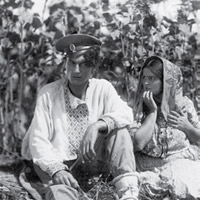
| |
|
_________________________________________________________________________________
| ||
Morieux. The History of Cinema Is the History of LightTwo special evenings with carbon lamp projections, and films from the heady early days of cinema: from 1903 to 1907. The films selected are an extraordinary find from the collection of the Van de Voorde family, travelling projectionists who criss-crossed Europe with their famed Théatre Mécanique Morieux and an impressive collection of films. |
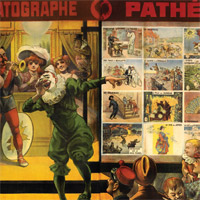
| |
|
_________________________________________________________________________________
| ||
Emulsion Matters:Orwo and Nová Vlna (1963-1968)In Czechoslovakia the New Wave brought in technical experiementation which was initially originated by the scarcity of quality film stock in the country. Seven important films produced in the 1960s, from Daisies by Vera Chytilová to the pre-Kubrick Icarus XB-1, can be discovered or re-discovered under a new light and thanks to the unique image quality of the Orwocolor film stock. This ‘Agfa color film stock’ from the Eastern Bloc countries was often employed in daring combination with the hard-to-find Kodak stock, or challenged by the application of the use of anamorphic widescreen or simulated tinting and toning.
|
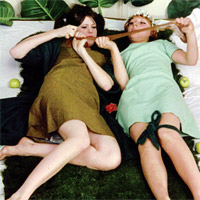
| |
|
_________________________________________________________________________________
| ||
Letters from Chris MarkerChris Marker – filmmaker, photographer, experimental essayist – was a unique soul. His essay films came to light after a gestation period which happened to be a very special one: the golden age of the French short film in the 1950s. Our tribute to Marker will focus on his early works, some of which have been very hard to see lately: Un Dimanche à Pekin, Description d’un combat (which has disappeared from the face of the earth for almost 50 years), La Jetée, Le Joli mai, La Sixième face du Pentagone, together with ...A Valparaiso by Joris Ivens with a commentary – nobody surpassed him in commentaries – by Chris Marker.Un Dimanche à Pekin (1956) • Lettre de Sibérie (1957) • Description d’un Combat (1961) • La Jetée (1962) • Le Joli mai (1963) • La Sixième face du Pentagone (1968) • ...A Valparaíso (1963) by Joris Ivens |

| |
|
_________________________________________________________________________________
| ||
Japan Speaks Out, Part 2 Singers and SwordsmenThe transition between silent and sound film in Japan happened slowly. It was not until 1936 that the majority of films produced in Japan were made with sound. The period thus marks an almost unique instance in which sound films were made alongside silents, and in which the aesthetic potential of new sound technologies were gradually assimilated and developed. This second part of an ongoing retrospective focuses on three studios: P.C.L., with its stress on musicality, urban life and its at times trenchant social commentary; Studio J.O., with its focus on social treatise as well as jidai-geki(period films); legendary Nikkatsu, with its realist period dramas. In collaboration with Tokyo National Film Center.Horoyoi Jinsei (Tipsy Life, 1933) by Sotoji Kimura • Enoken no Seishun Suikoden (Romantic and Crazy, 1934) by Kajiro Yamamoto • Ani Imoto (Ino and Mon, 1935) by Sotoji Kimura • Hyakumannin no Gassho (Chorus of a Million Voices, 1935) by Atsuo Tomioka • Tsuma yo bara no yoni (Wife! Be Like a Rose!, 1935) by Mikio Naruse • Sakasu Goningumi (Five Men from the Circus, 1935) by Mikio Naruse • Akanishi kakita (1935) by Mansaku Itami • Kochiyama Soshun (1936) by Sadao Yamanaka • Sekido Koete (Across the Equator, 1936) by Eiji Tsubaraya |

| |
|
_________________________________________________________________________________
| ||
War Is Near: 1938-1939
There were a number of films produced in Europe and the USA in the couple of years spanning 1938-39 which tangibly transmitted the feeling of menacing madness that was about to unfold. We chose for this series not so much those films most clearly foreshadowing the imminent conflict, as those that evoked an atmosphere of fears and fragile hopes, films made of subtle suggestion, shades and shadows and unspoken dialogue.
Bílá nemoc (White Illness, 1937) by Hugo Haas • Pour le mérite (1938) by Karl Ritter • Three Comrades (1938) by Frank Borzage • Oshibka inzhenera Kochina (Engineer Kochin’s Error, 1939) by Aleksandr Macheret • Menaces (1940) by Edmond T. Gréville • Sans lendemain (1940) by Max Ophuls |

| |
|
_________________________________________________________________________________
| ||
Bigger than Life: a Journey through European CinemaScopeOver the last decade or so, the magnificent screen at the Arlecchino theatre has allowed us to celebrate the marvels of CinemaScope, particularly American CinemaScope at its best, before the format somewhat lost its inspiration and motives. We will now look at the magic of the ‘European Scope’ and all of the variations the widescreen systems adopted in our continent.Beatrice Cenci (1956) by Riccardo Freda • La grande guerra (1959) by Mario Monicelli • Sammy Going South (1963) by Alexander Mackendrick • L’Aîné des Ferchaux (Magnet of Doom, 1963) by Jean-Pierre Melville • Szegénylegények (The Round-up, 1966) by Miklós Jancsó • Lyulskiy Dozhd (July Rain, 1966) by Marlen Khoutsiev • Pechki-lavochki (Happy Go Lucky, 1972) by Vasiliy Shukshin |

| |
|
_________________________________________________________________________________
| ||
CinemaliberoA new section will explore the impetuous and underground world of independent cinema, a selection of films from across the world which have sought a new language outside the mainstream. This year’s programme will span from East to West and from the 50s to the 70s, showcasing some genuine discoveries, from Marc Scialom to Afrique 50, possibly the most censored of all French films. This section will also include some of the most recent titles restored by the World Cinema Foundation, Martin Scorsese’s organization for the restoration, preservation and dissemination of neglected cinema around the world.Avoir 20 ans dans les Aurès (1972) by René Vautier • Lettre à la Prison (1969) by Marc Scialom • Ni Liv (Nine Lives, 1957) by Arne Skouen • Balgan mahura (Red Scarf, 1964) by Sang-ok Shin. Last but not least, Il Cinema Ritrovato will pay a tribute to Indian Cinema for its 100th birthday and to the French 1968’ Zanzibar Films.
World Cinema Foundation |
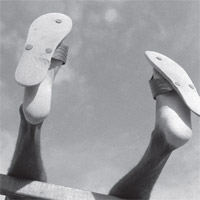
| |
|
_________________________________________________________________________________
| ||
Bonjour Mr. Lewis!Six fifty-minute segments will be screened over the festival’s week: a practically unknown masterpiece made in 1982 by French filmmaker and historian Robert Benayoun. Sifting through Jerry Lewis’s rich and well-organized personal archives, Benayoun focused on the divining rod of his sensitivities and extracted gems to produce a goldmine of a film, full of routines, rare TV shticks, behind-thescenes footage and interviews: an exuberant journey into the life and career of one of the giants of American cinema, an all-around filmmaker (director, screenwriter, choreographer, producer and superstar), slapstick genius, the undisputed King of Comedy. |

| |
|
_________________________________________________________________________________
| ||
Not Only FilmsIl Cinema Ritrovato also features: cinema masterclasses and restoration panels held by international film historians, scholars and restorers; original and vintage film posters exhibits; DVD awards, a film book fair, a daily blog for cinephiles, a farmers’ market and much more. For the youngest film fans a kid-friendly area, with a rich calendar of activities, screenings, workshops and games. | ||
|
| ||
|
| ||










